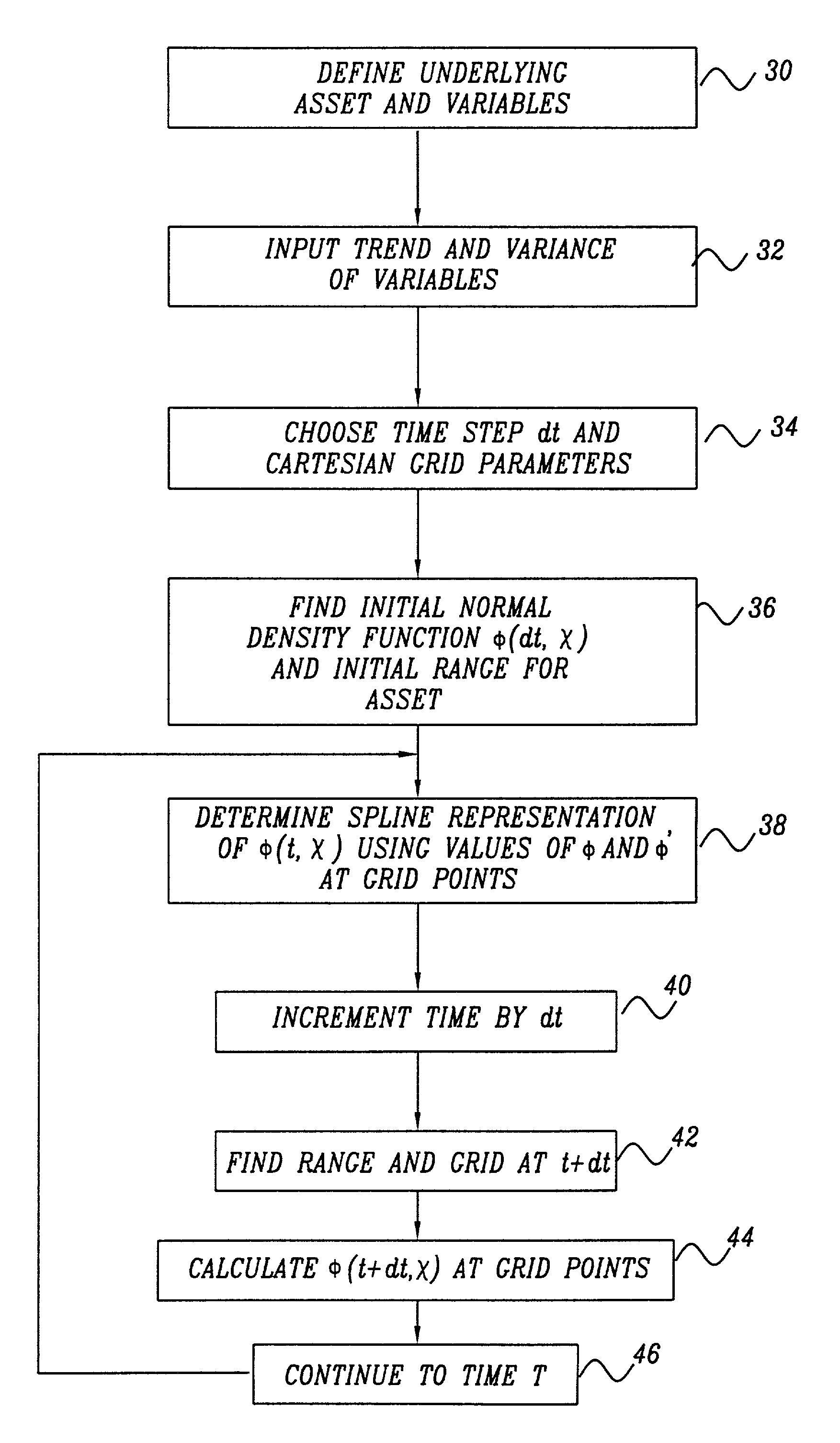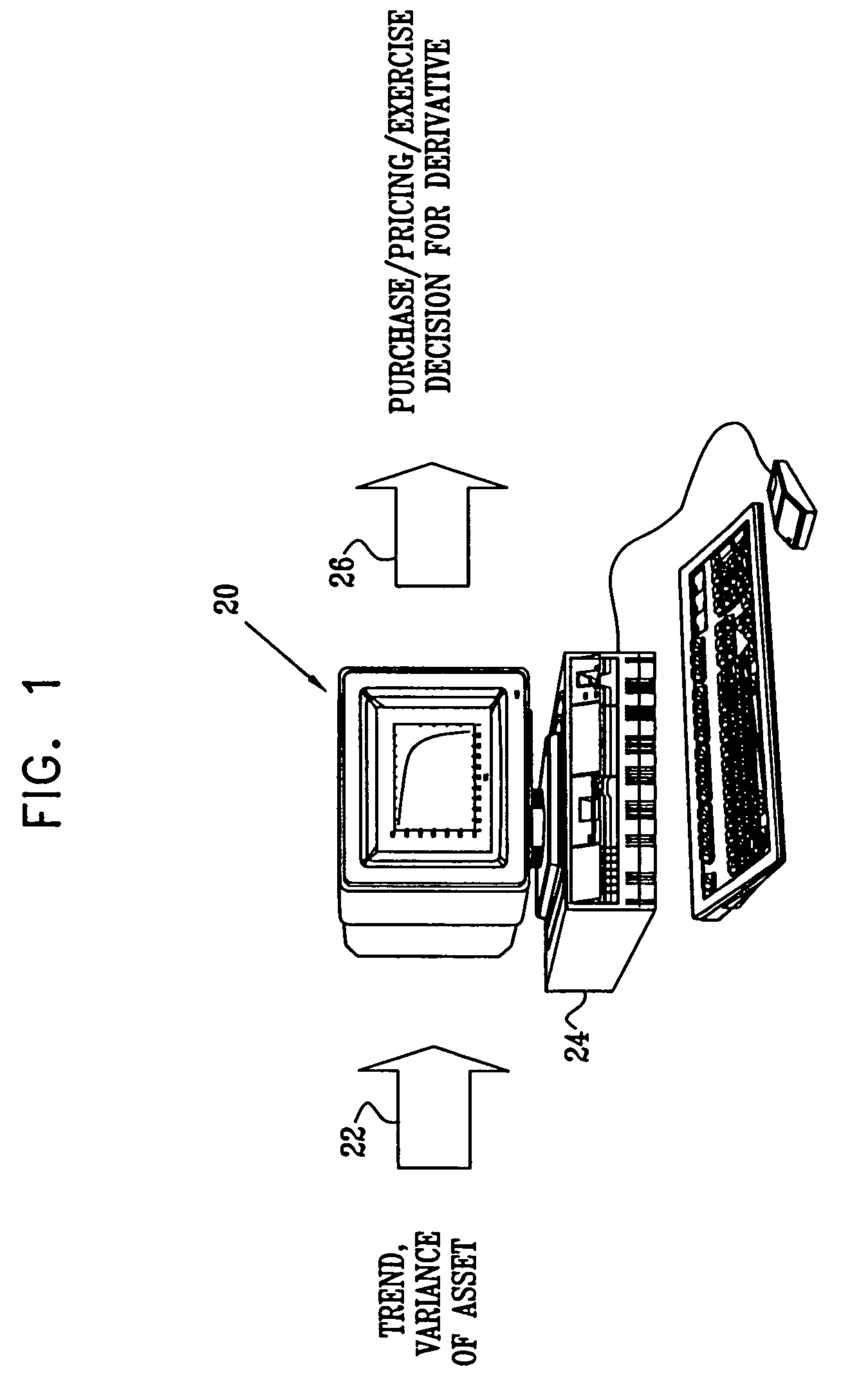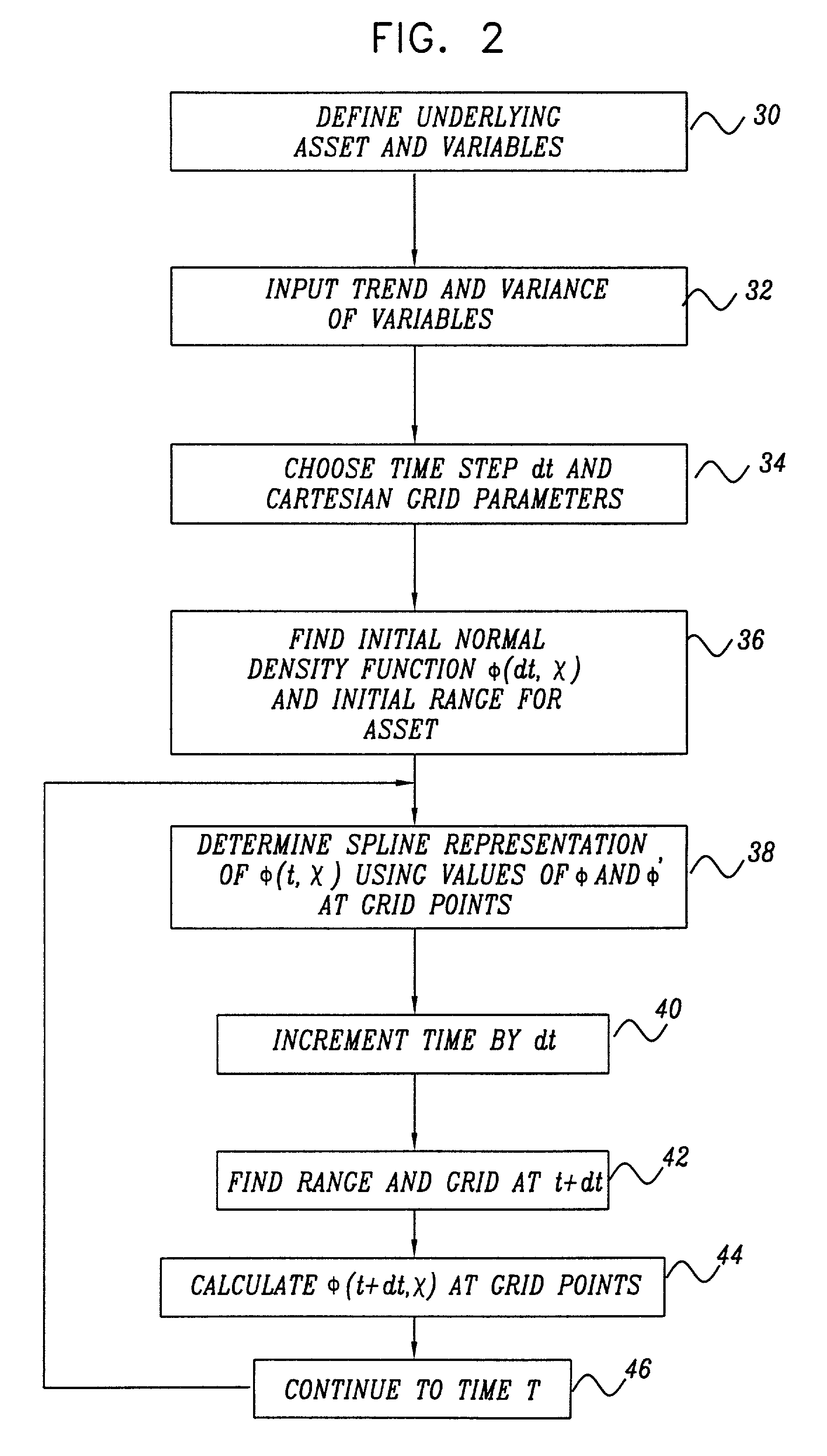Analysis of financial derivatives
a derivative and financial technology, applied in the field of financial derivatives analysis, can solve the problems of simple vanilla options posing a substantial challenge to derivative traders, simplistic models that do not reflect the complex reality of financial markets, and inapplicability of black-scholes analysis, so as to reduce computational burden and reduce risk
- Summary
- Abstract
- Description
- Claims
- Application Information
AI Technical Summary
Benefits of technology
Problems solved by technology
Method used
Image
Examples
Embodiment Construction
[0040]FIG. 1 is a schematic, pictorial illustration of decision processor 20 for evaluation of financial instruments, particularly derivatives, in accordance with a preferred embodiment of the present invention. Typically, processor 20 comprises an input interface 22, through which the processor receives input information regarding trends governing the behavior of a certain asset, preferably along with a group of other related assets and / or other variables. It also receives a measure of the variance in the price of the asset, which may possibly be in the form of a covariance matrix between the asset and the other related assets and / or variables. Alternatively or additionally, processor 20 may be programmed to extract trend and variance characteristics from raw data regarding the asset itself and other related factors. Various methods for determining the trend and variance are known in the art and are beyond the scope of the present invention.
[0041]Processor 20 comprises a central pr...
PUM
 Login to View More
Login to View More Abstract
Description
Claims
Application Information
 Login to View More
Login to View More - R&D
- Intellectual Property
- Life Sciences
- Materials
- Tech Scout
- Unparalleled Data Quality
- Higher Quality Content
- 60% Fewer Hallucinations
Browse by: Latest US Patents, China's latest patents, Technical Efficacy Thesaurus, Application Domain, Technology Topic, Popular Technical Reports.
© 2025 PatSnap. All rights reserved.Legal|Privacy policy|Modern Slavery Act Transparency Statement|Sitemap|About US| Contact US: help@patsnap.com



